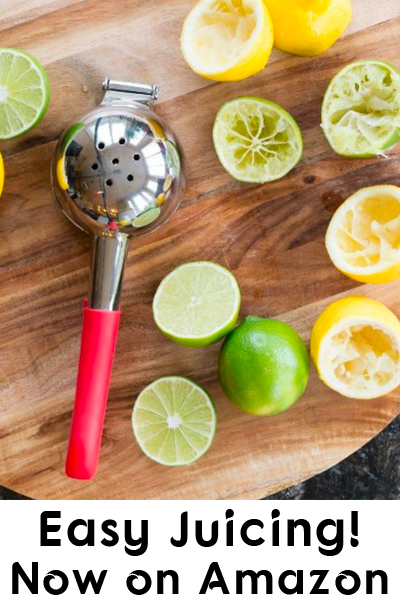How Many Florets is in a Pound of Cauliflower?
Sometimes it can seem frustrating to try a new recipe and not know how much of an ingredient to purchase at the store. Sometimes they give you a quantity of cauliflower in volume (2 cups), sometimes as a weight (12 ounces) and still others the cauliflower is given as a produce description (2 medium heads). But what are they really talking about? So how much is in a head of cauliflower?
In order to figure out how much is in a head of cauliflower we took a trip to the grocery store to check out the produce selection. We determined that the typical size of cauliflower is a medium head about 2 pounds in weight; this is what we chose to use for our test sample
Once the cauliflower was fully trimmed up, we removed the florets from the medium head and ended up with 3 cups of raw quality florets ready to use.
Did you know that the color of the cauliflower head depends on the variety with the most common type being white. However, it can also be found as green, purple, orange, brown and yellow. If you don't like the normal white variety, give the orange cauliflower a try - it has a delicious sweet and mild taste. Cauliflower originated from Asia Minor but today China is the largest producer of cauliflower in the world.
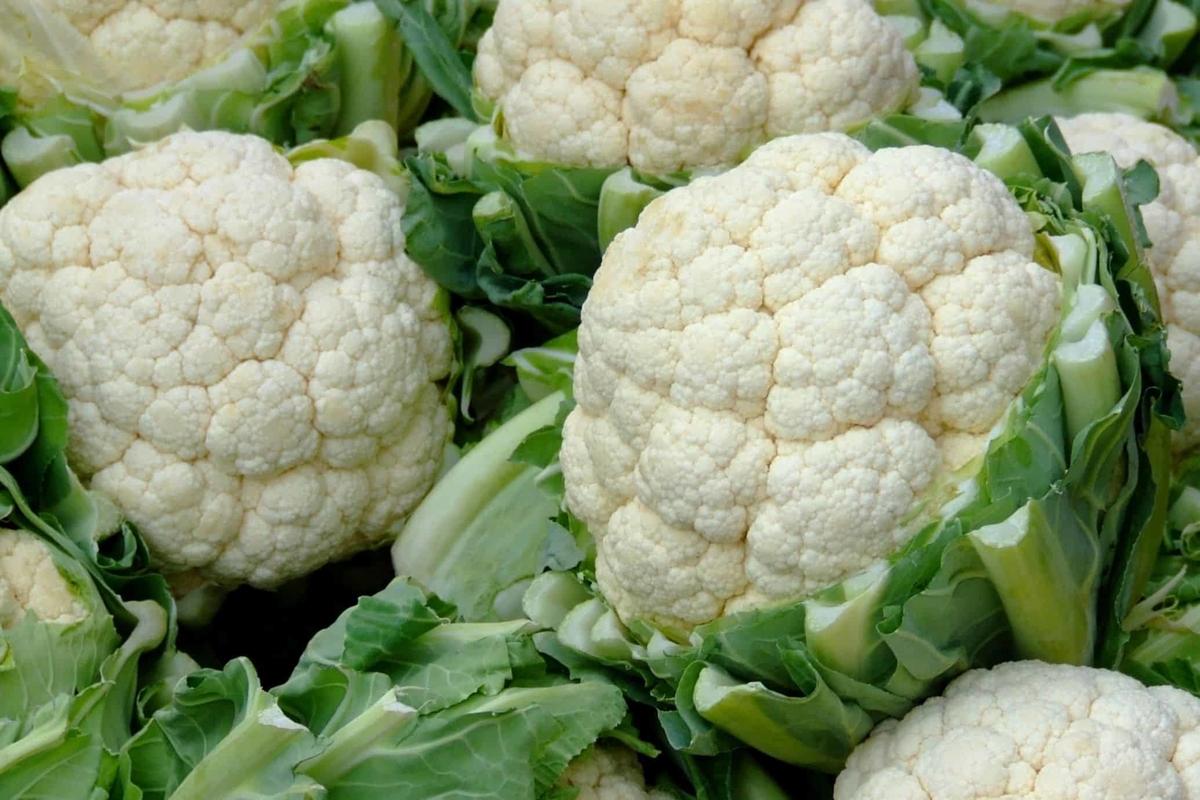
So in general, to answer How much cauliflower in a head it would be about 2 pounds of cauliflower or 3 to 4 cups of florets. This comes to about 1 1/2 cups per pound of cauliflower. If you are unsure, you can easily weigh the cauliflower on your grocery store scale to help calculate the quantity you are purchasing. You can also use our conversion tool below for any custom how much cauliflower is in a... measurements you need.
Custom Conversions for Pound of Cauliflower
One Pound of Cauliflower Equals
- There is 1 ½ Cups (355 mls) of Cauliflower Florets in a Pound of Cauliflower
of
You need 0.7 Pounds of Cauliflower
Want a Fancy Cocktail?
What Is Cauliflower
Cauliflower belongs to the same family as broccoli, Brussels sprouts and cabbage.
It is difficult to grow but can be planted in early spring or in fall. However, it is happiest when planted in a cool (not cold) climate.
The part of the cauliflower plant that is normally eaten is the large roundish head made up of little white flower buds called the curd.
Besides eaten raw, cauliflower is most often steamed, roasted and sautéed.

Is Cauliflower a Fruit or Vegetable?
What Are the Types of Cauliflower?
There are numerous varieties of cauliflower that take on a variety of colors. Besides white, the most common colors are orange, purple, and green.
• White: This is the most common type of cauliflower which is found in most US grocery stores. They have a white edible head and large round dark green leaves which helps keep the sun from shining on the cauliflower. It's the lack of direct sunlight that makes the head remain white.
• Orange: This hybrid variety of cauliflower has the same shape as the white one, but the curd is bright orange. You will also see it appropriately called Cheddar cauliflower. When cooked, the orange color gets even brighter.
• Purple: Both Graffiti and Purple Head cauliflower produce purple curds that are tender to chew and mild flavored. The biggest difference between these 2 purple cauliflowers is the Graffiti variety remains purple when cooked where the Purple Head turns a greenish color. Purple Head is most often eaten blanched or raw in salads in order to take advantage of its
• Green: Romanesco green cauliflower grow into smaller heads than white cauliflower. This cauliflower has a mild nutty taste and resemble the color of broccoli.
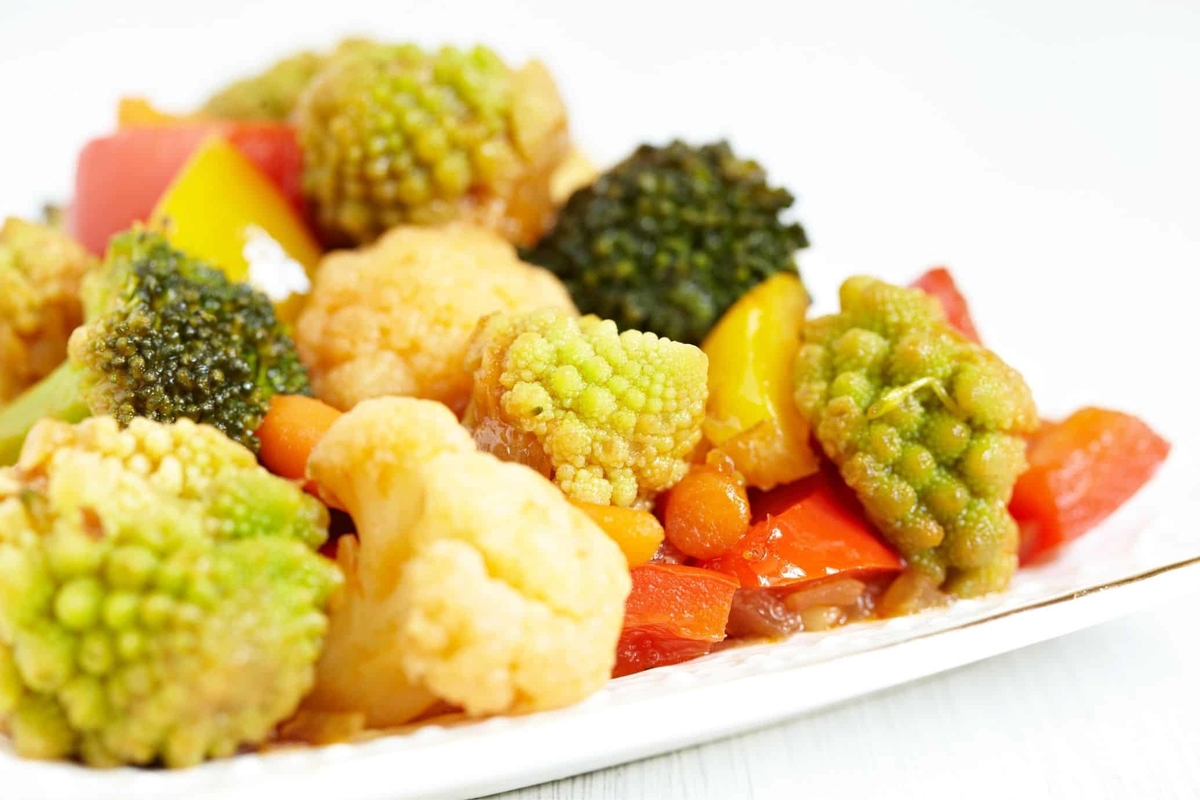

What Does Cauliflower Look and Taste Like?
Cauliflower looks like unripe white florets that are attached to a single stem that forms a compact, cabbage-like head, called a curd. The curd is generally 6 to 7 inches in diameter. The white head grows to about 6" across and is surrounded by long roundish green leaves on the stem.
In addition to the florets, the leaves and stalk can be eaten raw or cooked. Most often raw cauliflower is part of a veggie platter that is served with a dip. Many salads contain some raw cauliflower also. When cauliflower is cooked, it is served as a side dish to meat, poultry or fish.
The basic taste and texture of cauliflower is similar, no matter what color it is. However, the various colors do bring subtle differences. The basic taste has nutty undertones with a sweet tinge to it and its raw texture is crunchy. Once cooked, the texture becomes much softer
Because cauliflower does not have a strong flavor profile, it can easily be mixed with other vegetables and not smother them.
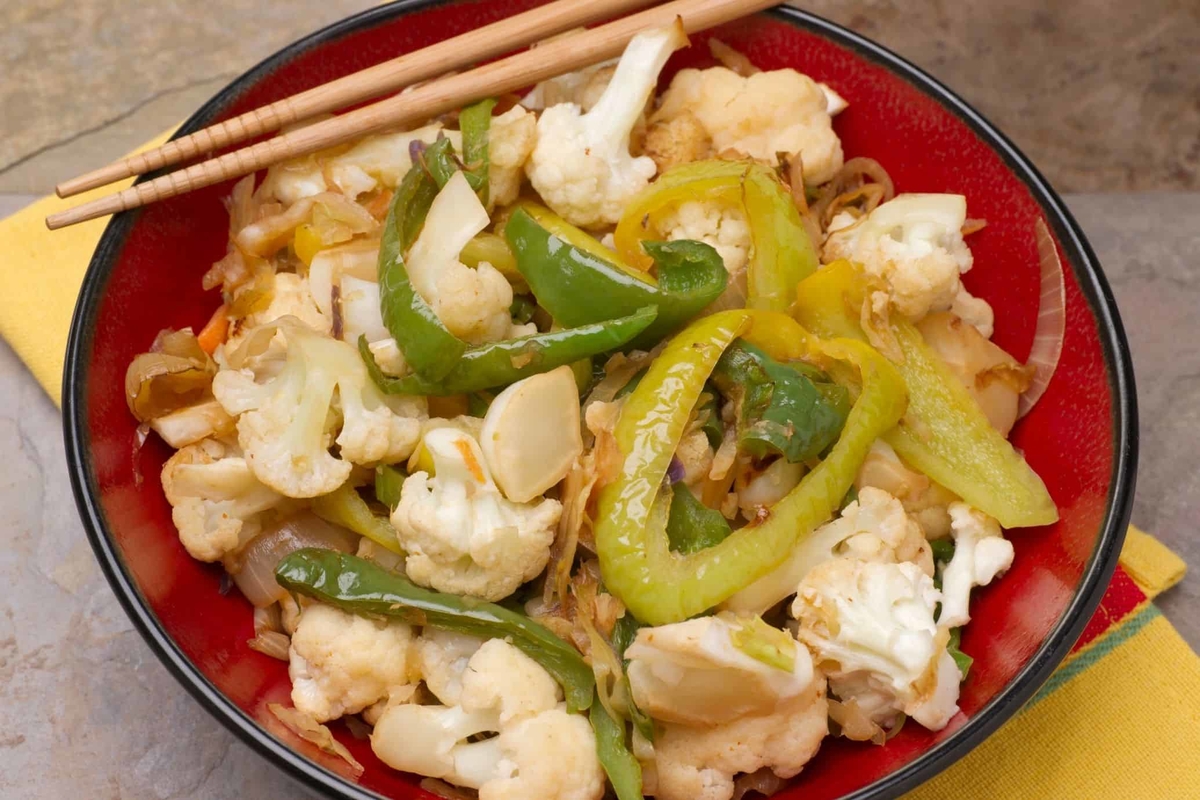
What are Good Substitutes for Cauliflower?
How to Cut Cauliflower
When you're ready to cook and eat cauliflower, start by washing off any remaining garden dirt. It is easiest to hold rinse the cauliflower head under cool running water in the kitchen sink.
Because of the odd shape of florets that make up the cauliflower head, most folks cut cauliflower by slicing down the smaller stems between the florets. This produces a bunch of loose florets. Depending on the size of the floret you need for the cooking method your recipe calls for, you can continue making more cuts to produce even smaller ones.
Steamed or roasted usually suggest bite-size pieces. Not only do these cook more evenly, but they are also easy to pop in your mouth.
Roasted, grilled, seared or gratins often call for a thick slab to be used. In this case you cut lengthwise straight through the whole curd, so the florets remain attached together.
Sautéed preparations cook more evenly when cut into small pieces
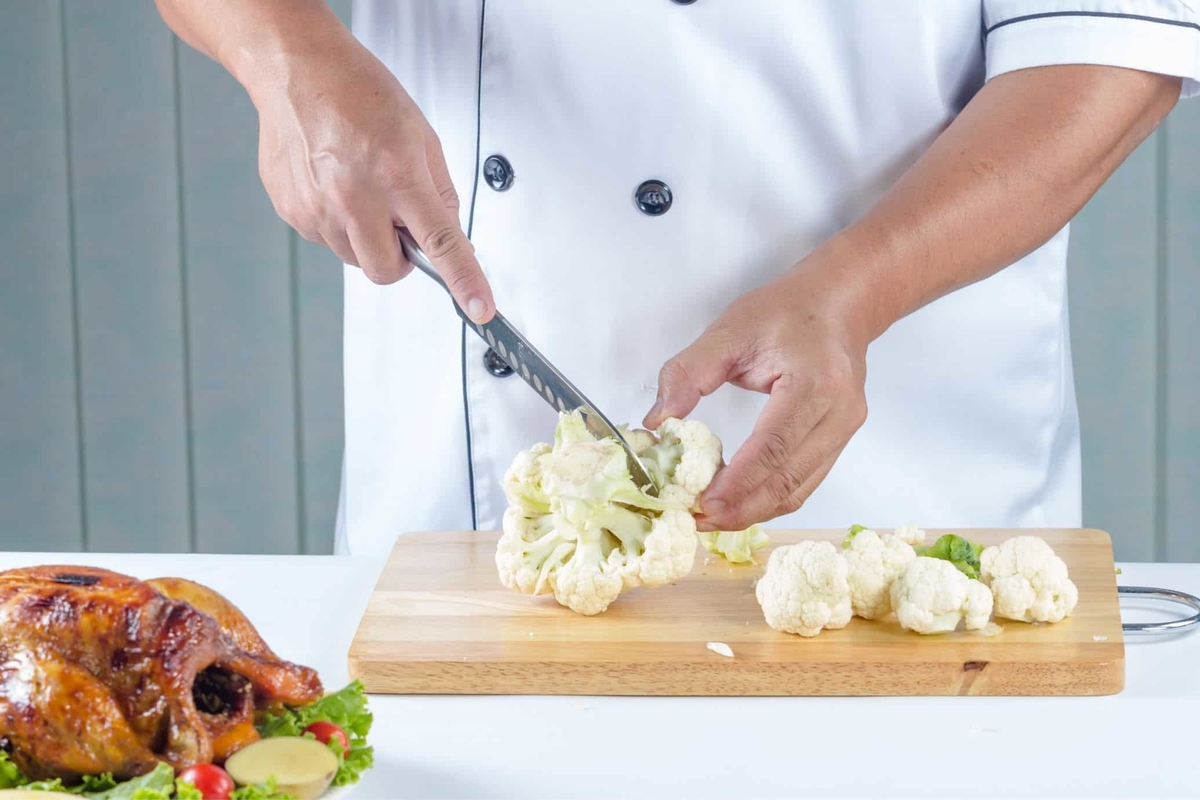
Can I Eat the Skin of Cauliflower or Should I Peel It First?
How to Make Cauliflower Juice
Most cauliflower heads do not have enough liquid inside them to make much in the way of juice. If you have a powerful juicer, you can give it a try, but it takes quite a few to do anything. There are many ways to enjoy eating cauliflower, that most folks don't find juicing worth it.
It is easy to purée cauliflower. Simmer the florets in broth, stock or other liquid until the cauliflower becomes tender when stuck with a fork. Place the softened cauliflower into a blender and puree. You can add some liquid until it becomes the consistency you prefer.

How to Store Cauliflower
Store fresh cauliflower heads in a loosely closed or perforated plastic bag in the crisper of the refrigerator. Cauliflower stays fresher if there is some air circulation, so it's best not to seal the bag closed. In this situation, it should last for 5 to 7 days.
Cooked cauliflower should be stored in the refrigerator in an airtight container. Then it should maintain its quality for 4 or 5 days.
For long-term storage, freezing cauliflower is a great option. Cut the cauliflower into smaller florets and spread them out on a baking pan. Place the pan in the freezer until cold and firm. Once icy cold, place them in a Ziploc freezer bag and put them in the freezer for later. Frozen cauliflower can actually maintain good quality for about 1 year.
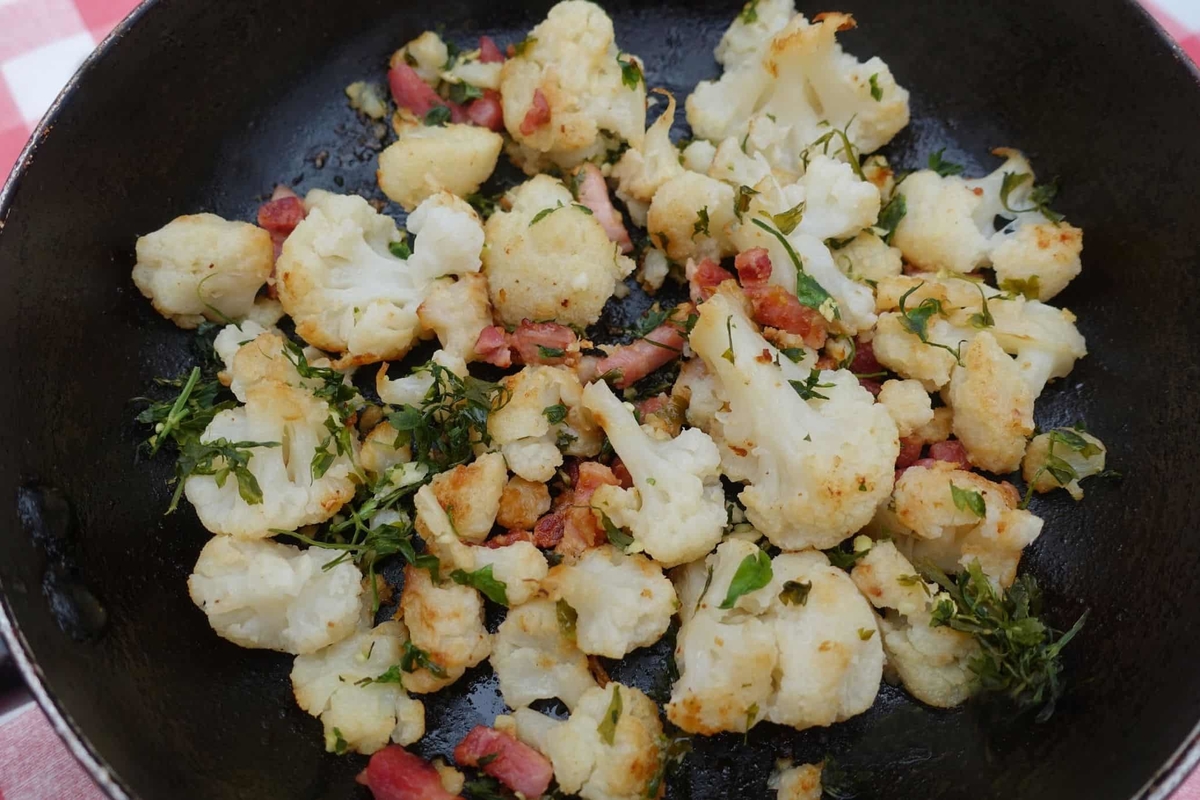
- What Is Cauliflower
- Is Cauliflower a Fruit or Vegetable?
- What Are the Types of Cauliflower?
- What Does Cauliflower Look and Taste Like?
- What are Good Substitutes for Cauliflower?
- How to Cut Cauliflower
- Can I Eat the Skin of Cauliflower or Should I Peel It First?
- How to Make Cauliflower Juice
- How to Store Cauliflower
How to Store Pound of Cauliflower
General How to Store Cauliflower Info
Cooked cauliflower becomes mushy and unappetizing even when refrigerated under the best of conditions; best to only cook what you can consume in a single day.
Short Term Cauliflower Storage
Cauliflower stores poorly, both raw and cooked; it quickly acquires a strong and unpleasant odor.
Store unwashed cauliflower for 4 to 5 days in a perforated plastic bag in the crisper section of the refrigerator when raw; do NOT store in a sealed container as cauliflower needs oxygen.
Washed raw florets should be tightly wrapped in plastic; they will keep refrigerated for 3 or 4 days.
Cauliflower Long Term Storage
Cauliflower freezes poorly; the flavor is okay, but it becomes watery and unappetizing.Florets can also be pickled.
Cauliflower Side Notes
The creamy white variety of cauliflower is most familiar, but a purple variety is also available.
Pound of Cauliflower Recipes
Sous Vide Cauliflower and Chickpeas Recipe
 Cauliflower might be on the bland side, but when sous vided then combined with chickpeas, cherry tomatoes and red bell pepper, it turns into a flavorful and filling side. With the addition of tart lime juice and spicy jalapeño pepper it's a complex dish that comes together in no time.
Cauliflower might be on the bland side, but when sous vided then combined with chickpeas, cherry tomatoes and red bell pepper, it turns into a flavorful and filling side. With the addition of tart lime juice and spicy jalapeño pepper it's a complex dish that comes together in no time.
Looking for Something a Little Different?
Popular Vegetable Conversions
How Many Bananas in a CupHow Much is a Bunch of Sage
How Much Juice in a Lime
How Much is a Bunch of Thyme
Volume of an Egg
How Much Corn is on an Ear
How Many Bread Crumbs in a Slice of Bread
How Much Is A Bunch Of Cilantro
How Much Is In A Bunch Of Basil
How Much Shredded, Sliced, Or Chopped Is In A Carrot
How Much Is A Pound Of Cheese Cubed Or Shredded
What is the Produce Converter?
One of the biggest hassles when cooking and working in the kitchen is when a recipe calls for "the juice of 1 lime" or a similar measurement. Often times when cooking people use bottled juices, pre-sliced vegetables and other convenient cooking time savers. Produce Converter will help you convert the "juice of 1 lime" and other similar recipe instructions into tablespoons, cups and other concrete measurements.
Produce Converter can also be used to figure out how many vegetables to buy when you need, for instance, "A cup of diced onion." You can use our easy conversion tool to figure out exactly how many onions you need to buy at the store in order to end up with the amount you need for your cooking.
We hope you enjoy Produce Converter and if you have any suggestions for how we can improve it and make your cooking easier please let us know.



